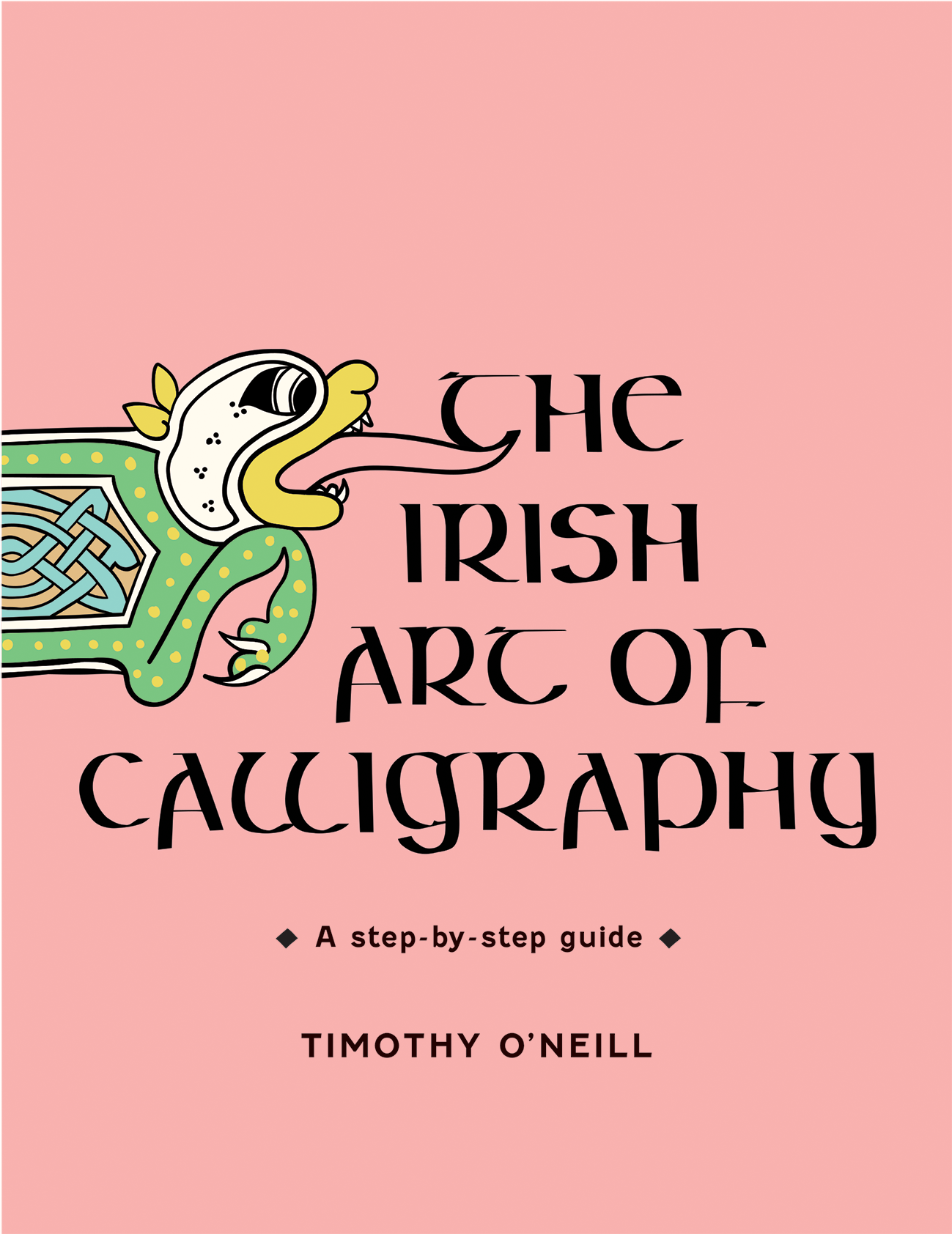TIMOTHY O’NEILL
Royal Irish Academy
€18
ISBN 9781802050240
Reviewed by
Dermot McGuinne
Dermot McGuinne is the retired Head of the Departments of Fine Art and of Visual Communication Design at the Technological University of Dublin.

This is a book that will appeal to anyone who has an interest in the history of the work of the early Irish monastic scribes, but more especially anyone who has a desire to learn the skill of writing in an aesthetically beautiful manner—calligraphy. It describes itself on the cover as a step-by-step guide to the Irish art of calligraphy. In this respect it is for the beginner, both young and old, no matter what age, and since beginners must begin somewhere in this regard the author, Tim O’Neill, focuses on using the round uncial style of the early monastic scribes as his vehicle. Consequently it takes on a rather traditional approach to the process. In this pursuit the beginner might take some consolation from the description of the working conditions of these early scribes: poor light, often poor sight and writing in damp cold cells.
O’Neill presents with the confidence that only comes from a thorough understanding of his subject. He has established himself amongst the foremost authorities on the history of this Insular majuscule tradition, as evidenced through his The Irish hand (The Dolmen Press, 1984) and its reissued updated edition (Cork University Press, 2014).
In addition, he brings to the project a first-hand artistic and technical experience as a practising calligrapher who has gained a huge reputation, together with a thorough understanding of the materials involved. Furthermore, as a teacher of this subject he brings an ability to communicate and inspire anyone with a mind open to learning.
A description of the first steps in writing in Ireland, pre-dating that of the monastic scribes, as evident in the wax tablets found in a bog near Ballymena, Co. Antrim, and stone carving from the church at Kilmalkedar, Co. Kerry, is provided. Interspersed throughout are a number of fine examples from the best-known sources, printed to a high standard. (It is commendable that the paper used comes from the wood pulp of sustainably managed forest sources.)
O’Neill begins with an introduction to the famous library at the Abbey of St Gallen, Switzerland, which he points out is one of the oldest and most beautiful in the world, while informing us of the role played in its establishment by the Irish monk Gallus, in whose memory a monastery was first built there.
While all the necessary tools and material such as pens, brushes and paper are readily available through art and craft supply shops, O’Neill describes in a most interesting fashion the ancient methods of making them for oneself. He indirectly lays down the challenge by inference of constructing these tools and materials from quill and other natural sources. (Here a word of care and caution about the plucking of swan or goose feathers might be well placed!)
This is not a book to be read, closed on completion and set aside but one that can provide many hours of ongoing enjoyment as it is engaged with. It can imbue a great sense of pride that comes from successful achievement and opens up the possibility of a long-term accomplishment. In a way typical of well-considered practice-based teaching, O’Neill presents even the most complicated tasks in a doable manner, thus helping to establish a confidence in the user (here also a reminder of the need for practice, practice and more practice would be a helpful reminder to the user).
In Part 2, ‘Learning to write a script’, O’Neill explains the correct way of holding the pen in order to get the desired result. He describes the importance of letter, word and line spacing in achieving uniformity before turning to the construction of each letter. We learn of the essential elements of drawing the simple down-stroke and the proper sequence in rendering the elements of curved letters. We then become aware that many of the letters of the alphabet can be achieved by combining these two marks. In a most helpful way, Tim groups certain letters that have some strokes in common, pointing out at the same time approaches to be avoided. In this way each letter of the alphabet is covered.
Variant and alternative forms are also described, together with some that traditionally were not included in the early works, thus making this alphabet more useful in a modern context. The use of the serif feature of the lead-in stroke of the vertical letters he suggests prompts a more thoughtful approach to the writing. Later, from the mid-fifteenth century, when printing from cast movable metal types evolved, it is clear that manuscript writing influenced the designs. In this regard the serif was thought to add beauty and, more importantly, greater legibility to the fonts deployed.
Part 3 explores the technique of decorating with dots and the use of colour. The construction of spirals, interlace and knotwork—so much a part of the work of the early scribes—is described in detail. The book concludes with an intriguing step-by-step approach to bookbinding. This is a work that not alone the author can justifiably feel proud of, it is an example of a real family effort with wife Christine, and offspring Brendan and Niamh, contributing to the project each in their own important way.
